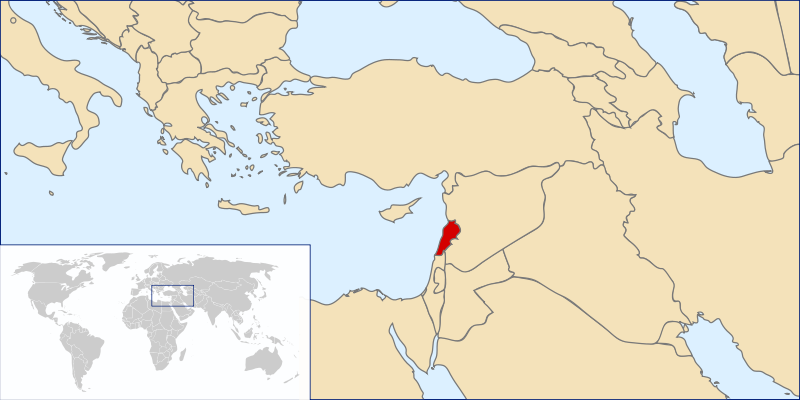 Lebanon (pronounced /ˈlɛbənɒn/ or /ˈlɛbənən/; Arabic: لُبْنَان Lubnān; French: Liban), officially the Republic of Lebanon (Arabic: اَلْجُمْهُورِيَّة اَللُّبْنَانِيَّة al-Jumhūrīyah al-Lubnānīyah; French: République libanaise), is a country on the eastern shore of the Mediterranean Sea.
Lebanon (pronounced /ˈlɛbənɒn/ or /ˈlɛbənən/; Arabic: لُبْنَان Lubnān; French: Liban), officially the Republic of Lebanon (Arabic: اَلْجُمْهُورِيَّة اَللُّبْنَانِيَّة al-Jumhūrīyah al-Lubnānīyah; French: République libanaise), is a country on the eastern shore of the Mediterranean Sea.
It is bordered by Syria to the north and east, and Israel to the south. Lebanon’s location at the crossroads of the Mediterranean Basinand the Arabian hinterland has dictated its rich history, and shaped a cultural identity of religious and ethnic diversity.
The earliest evidence of civilization in Lebanon dates back more than 7,000 years—predating recorded history. Lebanon was the home of the Phoenicians, a maritime culture that flourished for nearly 2,500 years (3000–539 BC). Following the collapse of the Ottoman Empireafter World War I, the five provinces that comprise modern Lebanon were mandated to France. The French expanded the borders of Mount Lebanon, which was mostly populated by Maronite Catholics and Druze, to include more Muslims. Lebanon gained independence in 1943, and established a unique political system, known as confessionalism, a power-sharing mechanism based on religious communities. French troops withdrew in 1946.
Before the Lebanese Civil War (1975–1990), the country experienced a period of relative calm and prosperity, driven by tourism, agriculture, and banking. Because of its financial power and diversity, Lebanon was known in its heyday as the “Switzerland of the East”. It attracted large numbers of tourists, such that the capital Beirut was referred to as “Paris of the Middle East.” At the end of the war, there were extensive efforts to revive the economy and rebuild national infrastructure.
Until July 2006, Lebanon enjoyed considerable stability, Beirut’s reconstruction was almost complete, and increasing numbers of tourists poured into the nation’s resorts. Then, the month-long 2006 war between Israel and Hezbollah caused significant civilian death and heavy damage to Lebanon’s civil infrastructure. However, due to its tightly regulated financial system, Lebanese banks have largely avoided the financial crisis of 2007–2010. In 2009, despite a global recession, Lebanon enjoyed 9% economic growth and hosted the largest number of tourists in its history.

Notes from Wikipedia








